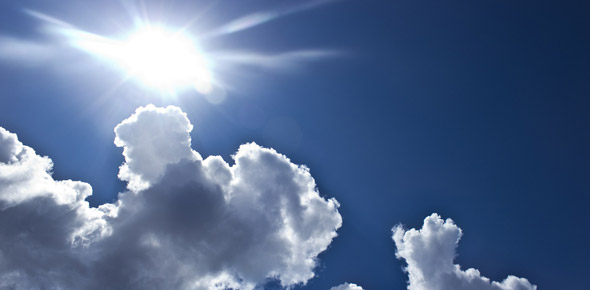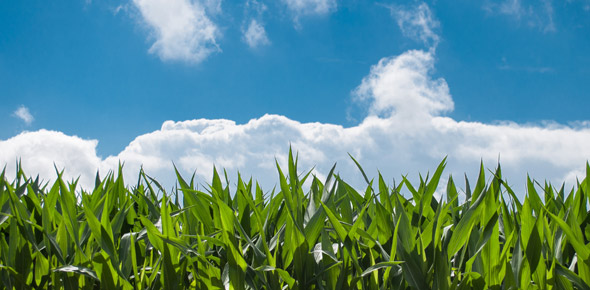Air Pollution In Philadelphia: Trivia Quiz!
(166).jpg)
How much do you understand about air pollution in Philadelphia? Could you pass this quiz? Air pollution is the most harmful form of pollution in Philadelphia. According to research, Philadelphia is the 10th most polluted city in the United States. Pollution is increasing more and more every year, and it causes terrible damage to the environment. If you want to see how much you know about air pollution in Philadelphia, this quiz can be useful.
- 1.
How does ozone form?
- A.
When oxides of nitrogen and hydrocarbons combine in the presence of heat and sunlight.
- B.
When clouds mix with exhaust.
- C.
When water vapor combines with wood smoke.
- D.
When carbon monoxide and particulates react with cold air.
Correct Answer
A. When oxides of nitrogen and hydrocarbons combine in the presence of heat and sunlight.Explanation
Ozone forms when oxides of nitrogen and hydrocarbons combine in the presence of heat and sunlight. This is because the energy from heat and sunlight causes the molecules of nitrogen oxides and hydrocarbons to react and form ozone. The reaction involves the breaking and rearranging of chemical bonds, resulting in the formation of ozone molecules. This process is known as photochemical reaction, where the energy from sunlight triggers the chemical reaction.Rate this question:
-
- 2.
Restarting your engine burns enough fuel to run your car for ______, and the average vehicle burns approximately ________ of fuel per hour.
- A.
60 seconds/1 cup
- B.
5 minutes/half a gallon
- C.
10 seconds/1 gallon
- D.
10 minutes/10 gallons
Correct Answer
C. 10 seconds/1 gallonExplanation
Restarting your engine burns enough fuel to run your car for 10 seconds, and the average vehicle burns approximately 1 gallon of fuel per hour.Rate this question:
-
- 3.
Which of the following childhood health problems has been linked to exposure to pollution from major roadways?
- A.
Asthma
- B.
Pediatric cancers
- C.
Permanently diminished lung capacity
- D.
All of the above
- E.
None of the above
Correct Answer
D. All of the aboveExplanation
Exposure to pollution from major roadways has been linked to asthma, pediatric cancers, and permanently diminished lung capacity in childhood. This means that all of the above health problems can be caused or exacerbated by pollution from major roadways.Rate this question:
-
- 4.
In the Philadelphia region, approximately how many people annually die prematurely from diesel soot pollution alone?
- A.
12
- B.
85
- C.
260
- D.
530
Correct Answer
C. 260Explanation
Approximately 260 people annually die prematurely from diesel soot pollution alone in the Philadelphia region. This suggests that the impact of diesel soot pollution on public health is significant and highlights the need for measures to reduce this type of pollution.Rate this question:
-
- 5.
Philadelphia is currently listed by the EPA as being in nonattainment with Clean Air Act standards for:
- A.
Lead and Carbon Monoxide
- B.
Ozone and Fine Particles (also known as PM2.5)
- C.
Sulfur Dioxide and Nitrogen Dioxide
- D.
Air Toxics
Correct Answer
B. Ozone and Fine Particles (also known as PM2.5)Explanation
Philadelphia is currently listed by the EPA as being in nonattainment with Clean Air Act standards for ozone and fine particles (PM2.5). This means that the city's air quality does not meet the required standards for these pollutants. Ozone is a gas that can be harmful to human health, especially when present in high concentrations near the ground. Fine particles, also known as PM2.5, are tiny particles suspended in the air that can penetrate deep into the lungs and cause respiratory problems. The EPA has identified Philadelphia as having elevated levels of these pollutants, indicating a need for improved air quality measures in the city.Rate this question:
-
- 6.
According to EPA's most recent Emissions Inventory, which of the following types of sources emits the most total pollution in Philadelphia:
- A.
Non-road sources like construction equipment, trains, planes and ships.
- B.
Point sources like large factory smokestacks.
- C.
Area sources like smaller boilers, gas stations, and homes.
- D.
On-highway mobile sources like cars and trucks.
Correct Answer
D. On-highway mobile sources like cars and trucks.Explanation
On-highway mobile sources like cars and trucks emit the most total pollution in Philadelphia, according to EPA's most recent Emissions Inventory. This is because there are a significant number of vehicles on the roads, and they release pollutants such as carbon monoxide, nitrogen oxides, and volatile organic compounds. These emissions contribute to air pollution and can have negative impacts on the environment and public health. Non-road sources, point sources, and area sources also contribute to pollution, but on-highway mobile sources have the highest emissions in Philadelphia.Rate this question:
-
- 7.
Because of climate change, Philadelphia is expected to become _______ and _______ by the end of this century.
- A.
Cooler and drier
- B.
Warmer and drier
- C.
Cooler and wetter
- D.
Warmer and wetter
Correct Answer
D. Warmer and wetterExplanation
Due to climate change, Philadelphia is projected to experience an increase in temperature and precipitation, resulting in a warmer and wetter climate by the end of this century. This can be attributed to the rising global temperatures and changes in weather patterns, leading to more frequent and intense heatwaves and rainfall events in the region.Rate this question:
-
- 8.
Approximately what percentage of children under 18 in Philadelphia have asthma?
- A.
6%
- B.
11%
- C.
25%
- D.
47%
Correct Answer
C. 25%Explanation
Approximately 25% of children under 18 in Philadelphia have asthma. This suggests that a significant portion of the child population in Philadelphia is affected by this respiratory condition. Asthma is a chronic disease that can have a significant impact on a child's quality of life and requires ongoing management and treatment. The prevalence of asthma among children in Philadelphia highlights the importance of public health initiatives and resources dedicated to addressing and managing this condition in the community.Rate this question:
-
- 9.
It's estimated that reductions in particle pollution courtesy of the Clean Air Act have added approximately _____ to the average American lifespan.
- A.
6 days
- B.
3 weeks
- C.
2 months
- D.
5 months
Correct Answer
D. 5 monthsExplanation
Reductions in particle pollution courtesy of the Clean Air Act have significantly improved air quality, which in turn has had a positive impact on public health. By reducing the exposure to harmful particles, such as those found in vehicle emissions and industrial pollutants, the Clean Air Act has helped to decrease the risk of respiratory and cardiovascular diseases. These improvements in air quality are estimated to have added approximately 5 months to the average American lifespan.Rate this question:
-
- 10.
On days with orange-level air pollution:
- A.
Advise children, seniors, and those with heart or lung conditions to avoid outdoor exercise during peak pollution hours in the afternoon.
- B.
Avoid driving and don't refuel your car until after 5pm.
- C.
Do your best to reduce energy use at home and in the workplace.
- D.
All of the above
Correct Answer
D. All of the aboveExplanation
The correct answer is "All of the above" because all of the mentioned actions are recommended on days with orange-level air pollution. Advising children, seniors, and those with heart or lung conditions to avoid outdoor exercise during peak pollution hours helps protect their health. Avoiding driving and refueling the car until after 5pm reduces the emission of pollutants. Finally, reducing energy use at home and in the workplace helps decrease the overall pollution levels. Therefore, all of these actions are necessary to minimize exposure to air pollution and contribute to a healthier environment.Rate this question:
-
Quiz Review Timeline +
Our quizzes are rigorously reviewed, monitored and continuously updated by our expert board to maintain accuracy, relevance, and timeliness.
-
Current Version
-
Mar 20, 2023Quiz Edited by
ProProfs Editorial Team -
Jun 03, 2015Quiz Created by
Alisontr
 Back to top
Back to top











